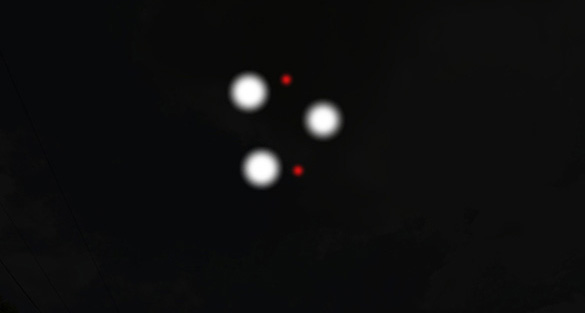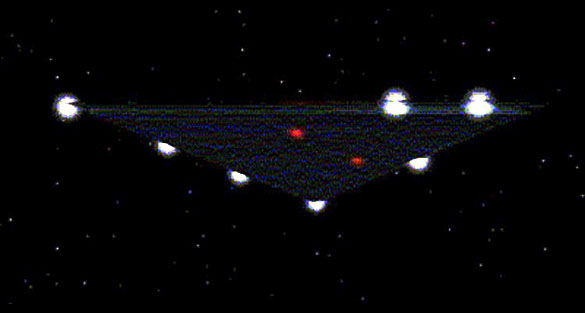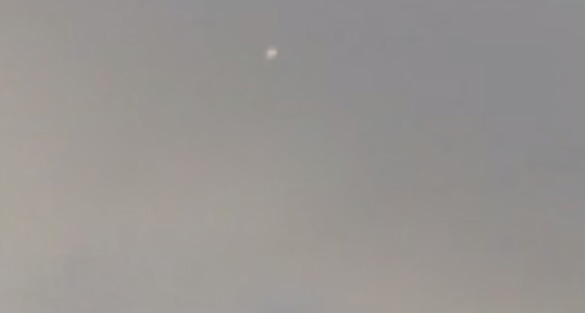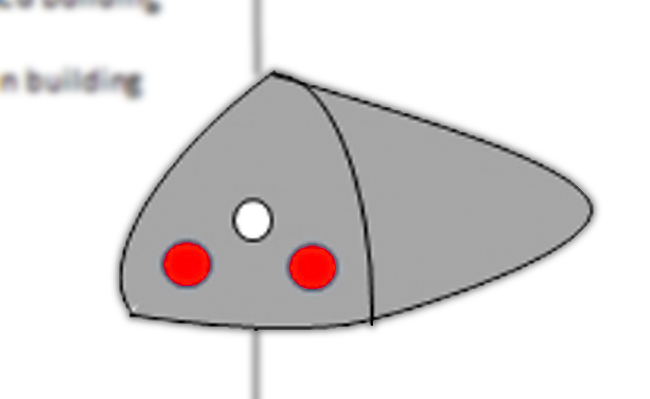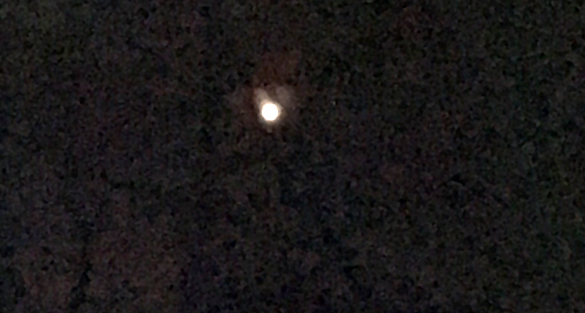Luis Elizondo Interview Transcript
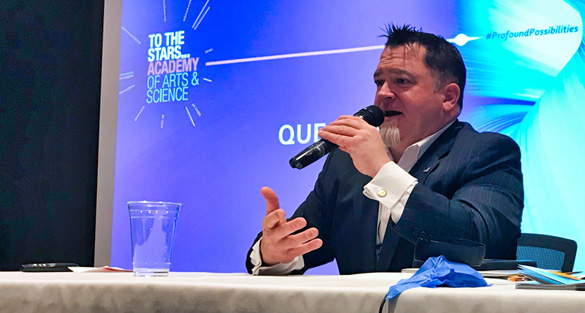
This is a transcript of our recent Open Minds UFO Radio interview which can be found here. Transcribed using AI technology.
Luis Elizondo: Hello Mr. Rojas. How are you?
Alejandro Rojas: Hello, how are you, Mr Elizondo?
Luis Elizondo: Good, sir. Good.
Alejandro Rojas: Well, we’ve got a little bit of time so we’re going to have to skip the pleasantries and get right to it. But one of the first things I wanted to mention, just because I was going to ask some questions about some of the stories I’ve written, but in order to kind of get all that in one foul swoop, I essentially, you’ve seen my stories, especially the story about AATIP and how it relates to AAWSAP. And I just want to verify you’ve seen that you’ve seen the stories that they are accurate.
Luis Elizondo: I’m aware of that. Yeah, that’s, yeah, that was fairly fairly, at least from my perspective. Uh, Mr. Rojas, obviously I wasn’t the director of AAWSP, so for me to expound too much on it, I would be qualified to do so. But certainly from, from my perspective that that was pretty, pretty darn accurate.
Alejandro Rojas: Great. And did you see any discrepancy that you can think of at this point?
Luis Elizondo: Um, no, not, I mean, I’d have to review it again, in all honesty, but nothing stands out that, that I looked at that contradicted what, what I know to be true.
Alejandro Rojas: All right, great. Well, let’s get into these questions. So first off, uh, Chris Mellon and Tom Delonge have both made statements about the influence that To the Stars has had on the Navy’s decision to release new UFO reporting protocols. And Anthony Lappe said in an interview that I had with him that this will be reflected in the show and ah, is that true? I mean, did you all have an influence with the Navy?
Luis Elizondo: Yeah, obviously, but it was a team effort. I like to kind of explain why I even joined TTSA in the beginning because I, you know, I resigned from the Pentagon in 2017, um, because, and despite the overwhelming evidence at both the classified and unclassified levels that UAPs are real, they exist. And, um, for me, having the ability to join TTSA, was an honor privilege because of the people you just mentioned. you have folks on there like, like Tom Delonge and like Chris Mellon, Steve Justice, Hal Puthoff, Jim Semivan. These are folks that I knew when my government time to be, particularly from the government side, folks like Chris and Hal and Steve Justice and Jim to be some very, very serious, no nonsense individuals. So basically when you have the ability to join the team made up of such high level, incredible from the military personnel and an Intel personnel, um, you know, you, you do that.
And as a result of that, each one of us has a certain degree of expertise in those areas. The other don’t. And so what you’ll see in the show is each and every one of us engaging different aspects, whether it’s government interaction or legislation or talking to a former military or current military individuals, men and women in uniform. Each of us has a very specific skill set and we don’t, we deliberately don’t overlap each other. Um, because frankly, Chris, no one’s going to be able to understand the bureaucracy like someone like Chris Mellon, um, you know, let’s face it, I kind of make a joke that, but Chris Mellon knows how to swim through government bureaucracy, like a shark. I mean there’s very few people that are as adept and savvy to how governments operate and sometimes don’t operate, even the dysfunction, than Chris Mellon. So he was absolutely instrumental and vital getting this to the forefront of our elected members.
But it wasn’t just Chris, keep in mind you have Tom Delonge and I often say, you know, sometimes in a crowded room you need a megaphone. And Tom Delonge is that person. He’s very, very creative. Uh, you know, we often joke, sometimes you need a bull in a China shop. And from my perspective, Tom is about like a hand grenade and in a China shop. Um, but you need that sometimes if you want to fix something, you’ve got to, you’ve got to break some China. And then you have folks like Hal and Steve Justice from their perspective add a tremendous amount of scientific credibility, with their backgrounds.
Alejandro Rojas: Now in, the History channel dropped some really exciting, uh, clips from upcoming episodes, some Navy pilots talking about a 2015 incident. And from what I understand, a couple of those guys, if not both, are still active. Right? So they would have had to get permission to be on the show.
Luis Elizondo: Roger that. So Mr. Rojas, the way the navy works, you don’t, you don’t come out in public unless you have permission from your public affairs office. So having that endorsement is really, I think, something that’s unique in this show. I’m not aware of any, and I could be wrong, I’m not aware of any other incidents where the government has allowed their active duty members to, to speak on, on whether it’s television or speaking to members of Congress about UAPs I think and the fact that history channel was successful in being able to, to some degree, um, get all of this, capture this as it was unfolding on camera. It’s really a testament to, to the, the approach history channel took when doing the show. This is, as I said before, this is not a UFO hunting show. This is not a, this is not a reality show.
This is a show about reality and they’re fundamentally different. And you can see that when in the way history channel approached this, um, they, even the producers, these aren’t entertainment producers. These are hardened investigative journalists that have spent their days cutting their teeth, looking at the dark underbelly of, of, of, of the human race. They did things such as organized crime and human trafficking and even some of the camera people that were assigned to this effort. Were, were in in combat zones filming US troops under fire. Um, yeah. So this is really a, a different type of program and I think it really is groundbreaking. And from that perspective alone.
Alejandro Rojas: It’s exciting to have such great navy cooperation, I mean in the UFO reporting protocols, but also allowing these pilots to come forward.
Luis Elizondo: It is, and I think that’s also, I think that the Navy also realized what we were doing here. We weren’t, again, it’s because we weren’t trying to do a UFO hunting show. We were trying to, to have an honest conversation about the truth and what’s, what really might be out there.
Alejandro Rojas: Now the DoD has not really been, at least their PAO office has not been as cooperative. Uh, they’ve kind of made some statements that were counter to yours, but in each instance they’ve had to kind of correct themselves and say, oh, well, sorry about that. Lou was right. Why do you think there’s, there’s been this kind of issue?
Luis Elizondo: Well, I, you know, government bureaucracy is large and is complex. Um, I wouldn’t be surprised in the near term if they amend their statement yet again. Um, for the last year and a half, obviously they were quite clear that, um, the program was real and that was part of that program. Um, but you know, people leave office and new people come in. So I think we just sometimes need to give them a little bit of time to catch up.
Alejandro Rojas: Yeah. Right. So, and this is another thing that’s kind of out there and I’ve talked to Eric Davis about this and Leslie Kean, because they’re part of the conspiracy. This idea that there’s this conspiracy and it’s not you all guiding your investigations but some kind of hidden hand up there and that To The Stars is just one part and the New York Times are all involved, you know, in this kind of conspiracy to release information. Um, and of course Eric Davis has called this a conspiracy nonsense and Leslie Kean has said, “no, this is due to our hard work.” Uh, would you agree with Davis and Kean?
Luis Elizondo: I mean, yeah, look, everyone’s entitled to their own opinion, right? Hey, not everyone’s going to agree with or necessarily like what, what, what we’re doing, especially when you’re speaking about a topic that is as potentially rich and obscure as, as UFOs are, and so because of that, people are always going to try to poke holes in the story or have their own supositions or inuendos. And you know, that’s, that’s part of the dialogue. Um, in the end of the day, this is a conversation for the American people to have. And, and obviously sometimes you’re going to have people assume false narratives at the end of the day. So the data speaks for itself and you know, people will, will make their own decision. I think at the end of the day they’re going to realize, yeah, this is absolutely going down the way that the New York Times and others like Politico, uh, have reported. They reported very, I think, very accurately and faithfully so far. So, um, yeah, I absolutely support their, their position.
Alejandro Rojas: Now at Tyler Rogoway. He’s a guy who writes for the defense, wrote an article recently and he highlighted, you know, something I love to highlight the hard work that Tom Delonge did to make all of this happen. Um, he kind of takes this perspective that almost even is kind of like the conspiracy guys, at least there’s military involvement and we just talked about how the navy’s being cooperative, but I mean, are your investigations, do you feel, uh, do they guide you at all? Or are they just, are is To the Stars, You, Chris, and the group, do you decide what you’re going to go after?
Luis Elizondo: Well, I, yes, we decide what we we are going to do. But again, you know, if you are living in a neighborhood, you don’t play loud rock, hard rock music at midnight and upset your neighbors. I mean, this is a collaborative effort. Obviously to get the cooperation of the navy, you need to work well with elements within the u s government. So, you know, it’s not a conspiracy we’re going to go ahead and push a certain narrative on behalf of one group of, of individuals or another. Uh, but at the same time too, you know, you have to, if you want the cooperation of the government, you have to work with the government. Um, and I don’t think that’s a bad thing. Are we being influenced by the government? Absolutely not. That’s that’s nonsense. But are we going to continue to work well with the government? Absolutely. Why wouldn’t you? And this is something that that, look, we wouldn’t have got those three videos released if we weren’t. So, you know, like it or not, it’s in our best interest to, to work in a collaborative, in the spirit of cooperation and collaborate with them.
Alejandro Rojas: Now another thing that’s happened, of course there’s all these controversies that pop up and it’s great to get clarification. Uh, David Fravor was in Oregon and he made ah, was talking about the event, some great stuff, but some people felt he was kind of casting doubt on some of the witnesses, including Kevin Day. I’ve interviewed Kevin Day. He seems like the real deal. I mean, do you vouch for Kevin Day’s testimony?
Luis Elizondo: I mean anytime you have an accident, you get witness testimony for a reason because everybody’s going to view the action and from a slightly different angle. And that’s how you put the piece of the puzzle together, right? The jigsaw puzzle isn’t just one piece. It’s a bunch of pieces and eventually when you put all the pieces together, you get a nice comprehensive mosaic of what the picture is supposed to be. And in this case, I think it’s exactly the same case. I think it’s the old analogy, if you will, of three blind men trying to describe an elephant, right? They’re all describing something completely different and yet it’s really the same thing, parts of the bigger picture. So let’s look at this just very briefly for 30 seconds, Fravor was on the USS Nimitz and he was one of the pilots that actually engaged this thing up close and personal and actually be an eye witness.
But let’s, you know, that was a brief moment in time. Let’s look at Kevin Day. He was onboard the USS Princeton, not the Nimitz, he was on the ship that’s actually designed to look at the, the the combat environment, so to speak, with radar. And so what, what Kevin Day was able to see was certainly a much larger comprehensive picture than, than what you have with Fravor. Fravor is, is an aggressive, rare breed of pilots. As I said before, he’s one of the few people, uh, that, that actually chases down danger, doesn’t run away from it. They actually went towards it. And you want those guys that are fighter pilots, that’s exactly who you want. You know, winning wars on your behalf. Kevin Day is also a graduate of top gun, just like, like, uh, Commander Fravor was and he is one of the most highly trained individuals on the planet regarding the Spy One radar.
So he was in that, on that ship for days and days and days tracking these things. So in essence, what you have here I think are both, I think where, where, where the rub comes, where the frustration comes with the Fravor is Dave Fravor is a fighter pilot. I mean that is, he has been born and bred to do that. And so he is, he’s, if he feels that something or, or, or someone for some reason is not, the information is not consistent with what he’s saying, he’s going to do what he does. And that’s basically call attention to it and say look, I disagree with that, but at the end of the day, I think when you look at this, you do realize that that both, or at least from my perspective and others that work in the government with me that actually both are telling the truth from their perspective. Um, that that’s both accurate information, either one alone.
Alejandro Rojas: Right. So on the show, there were some hints that you’re going to be covering this UK incident, another military incident in Rendlesham forest. And, uh, the New York Times had reported that at AATIP had studied people who said they had experienced physical effects from encounters. Is that what will be covered, uh, on the Rendlesham piece?
Luis Elizondo: Um, I would love to answer that question, but I think it’d be better for the audience to, to, to watch the episode. And it’s not just about a shameless plug for the show, but it’s to just simply answer yes or no would not do it justice. Um, I think what you are going to see is a, is a, a comprehensive picture of the effect on our men and women in uniform. Um, that this phenomenon has. And that may include, that may include even medical effects.
Alejandro Rojas: Wow. And I don’t think you should be shy about plugging the show at all. It’s a great show and, and that’s kind of what we’re here for. But, um, the ADAM project, that’s another one where we haven’t heard a lot of results yet. Are we going to hear results for that in the show?
Luis Elizondo: Um, I, I suspect so, you know, history channel, and you gotta give them credit, they are, when they approach the show, again, this is not, not like a typical entertainment show this is a docu series, they, don’t even allow me to watch the episodes. Um, they, because they want to keep the reporting pure. And so honestly, some of these questions I can’t answer. I don’t know what made it, if you will, from the cutting floor onto TV. So when the audience is watching the episode for the first time, so am I.
And as embarrassing as it may be for me to say the truth is that you want to preserve that integrity when you’re doing a show like this. I think, I think it’s important. So a lot of the stuff you will get to see, I’m seeing it for the very first time as well.
Alejandro Rojas: Gotchya. So here’s another question then related to AATIP work. Um, Bob Lazar was in Oregon and Fravor was there with him. This is a guy who made area 51 famous by saying he kind of worked on this crash retrieval project and him and Fravor seemed to become kind of buddies out there. Uh, now Davis who is one, Eric Davis, who’s one of the contractors with AATIP, doesn’t believe Bob Lazar’s story. However, he told me in a recent interview, he does think they’re have been crash retrieval programs. Have you come across anything like that? Do you think that uh, there have been programs to study, I guess kind of like ADAM, you know, material retreived?
Luis Elizondo: Well sure, I mean the government, the government always has, I mean, we have an entire capability within our intelligence community that, that study, you know, material, whether it’s material from a foreign military, you know, a technology or anything else. We’re always trying to figure out what something is. Um, and that holds true to anything. So as far as specifically confirming whether or not we have a collection capability for the study of UAP, I am going to politely decline from answering that question. I’m no longer in the u s government. And so therefore for me, answering on behalf of the US government with, I think, would not be in good faith. Now, I did state for the record when I was asked on, on a recent interview by Tucker Carlson, do I believe that material exists? Um, I stand, absolutely stand by that statement, but I unfortunately, I don’t think I can elaborate more on that.
Alejandro Rojas: Right. And to clarify, I mean, you believe that likely does exist, but it’s not like something you can prove.
Luis Elizondo: Um, I didn’t say that. Uh, I just, I’m going to probably politely, uh, uh, deflect, deflect that question. But I will, I will say though, the first part of your question about, um, Mr Lazar and Mr Fravor, I never met Mr Lazar, to be honest with you, I don’t have an opinion either way. When I was running AATIP, I deliberately avoided knowing any, and this probably rubs people the wrong way, but I did not study Ufology and Ufologists and, and, and if you will the, the current of, um, of personalities that are involved in it. Um, and I do that deliberately because I want it to remain fair and objective. When we were looking at the data, I didn’t even want that to run the risk of subconsciously having some sort of pre notion of what something is or isn’t. Um, kind of, if you will, influence our, our analysis.
Alejandro Rojas: Right. I’m glad you said that because a lot of people wanted me to ask you about this historical stuff, but I know, just like you just said, you didn’t really look into, uh, the UFO lore out there. So…
Luis Elizondo: I mean, the same reason, honestly, why I don’t offer my opinion very often because I’d rather stay with the facts because at the end of the day, as I’ve told other people, and again, Tucker Carlson, you can be absolutely sure of something and you can also be absolutely wrong. So, um, as long as we stick to the data, I think we’re better off that way.
Alejandro Rojas: There’s been rumors out there that you all have reached out to Lockheed and Boeing, uh, to, to, I guess maybe have them help you on projects. Is that something that happened? Do you think that you’ll be able to work with them?
Luis Elizondo: We’re always looking for partnerships and, and, and, and capabilities. Um, those partnerships are some times, um, sensitive and we have to be mindful of that. Other times, um, they’re not so sensitive. But what I will say is in general terms, we are always looking for opportunities to partner. Um, and I think, I think that’s the responsible way to do business because other companies and other organizations may have capabilities that we can leverage. Um, and you know, we don’t have to spend $1 million doing something. If another company has a capability to do something, you know, that costs much, much less and yet get the same results.
Alejandro Rojas: Right. And you’ve got a former Lockheed exec on your group, Steve Justice, and in the show.
Luis Elizondo: Yes we do.
Alejandro Rojas: And of course we know Tom has, has had conversations with John Pedesta and another, uh, Lockheed exec. So you’ve got, you have some strong advocates.
Luis Elizondo: Well, I think you know that’s prudent, you know, why wouldn’t you want to get some of the very best in the aerospace industry to work with you if you can. Again, I’m not going to go to any type of detail of specifically who or what we’re working on with any organization, but, but yeah, I mean that’s, I think that’s, that makes sense.
Alejandro Rojas: Now, I know we’re running out of time, so, uh, I was wondering if you could talk on, of course, part of the TIC TAC incident that Fravor was involved with was this something possibly underwater. Now on this report that we got that was leaked by George Knapp, uh, they, they talked about they couldn’t get any sonar of this thing. Was there any other information that gathered that verified whether or not there was an object underwater in that incident?
Luis Elizondo: So, information, likeanything else, um, can evolve over time. And sometimes you can get a clear picture or sometimes you get a muddier your picture. Um, and some people are willing to come out later on that weren’t willing to come up before. Um, let me, let me put this in terms of more generalities. Nimitz aside, um, there have been reports of these things potentially operating not just in the atmosphere but potentially in a vacuum environment such as space and even on the water. So for that reason, one of the observables we’ll talk about in the show is transmedium travel. The ability for an object to seemingly perform, uh, without having to change its, its functional design perform the same way, whether it be in atmosphere or in lower earth orbit or perhaps even underwater. Let me give a really quick analogy. If you want to, right now the world is full of compromises and I think that’s true in relationships.
That’s also true in, um, in technology. Do you want to have a plane that goes really, really fast? You think of something like a Concorde. If you want a boat, uh, that, that can, uh, you know, if you will build very fast and probably have a, have a, a race boat, a speedboat, but it’s hard to make a plane, um, that flies really fast into a boat that flies really fast. So if you look at a sea plane, which is kind of a our best way of compromising between air and sea, it’s not really a great airplane. It’ll fly and gets you to where you need to go, but it’s not going to fly super fast and be super movable, uh, cause of pontoons hangin off the bottom of the boat. It’s designed to also be a boat. And if you use a sea plane as opposed, well, it’s probably not going to handle really rough water like a typical boat would be designed to do because it’s the, that is designed for compromises. If you wanted to fly and swim then it’s probably neither going to do very well, um, it can do it, but, but not, not fantastic. So these things don’t seem to have those compromises. In some cases they seem to be able to perform just as easily from one environment to another.
Alejandro Rojas: And to plug a history show, so hopefully they’ll let me get this question in, real quick sentence before your show, what do you think of the ancient aliens theory?
Luis Elizondo: Um, no, I, I really don’t. I think, um, people are absolutely entitled to their opinions and I think we need to, to allow people to have their opinions. That’s what, that’s what this is all about. This is what this country’s all about having. We should never be afraid of ideas. What we should be afraid of is, is a lack thereof. I would rather not have an answer to a question than not have the ability to question the answer. Let me, let me rephrase that again. I’d rather not have the answer to a question than not be able to question the answer, if that makes sense.
Alejandro Rojas: Yup, totally makes sense. All right. I think we’re out of time, so thank you so much.
Luis Elizondo: You got it. No problem, Mr Rojas. Nice talking to you.
Alejandro Rojas: Yup. Absolute pleasure.
Get more information ab0ut Unidentifed at the official website.


